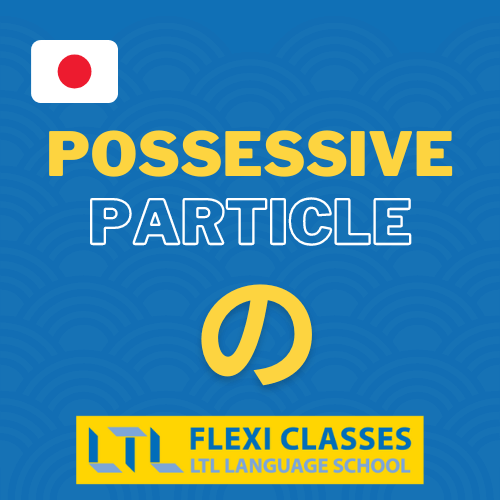A1 Japanese Grammar || Topic Particle は
This is definitely one of the first Japanese particles you should learn: the Topic Particle は (wa).
As you might have noticed, the Japanese language has many grammatical particles, also called function markers.
They give context to other words, so for example we’ll have:
- The object particle を
- The subject particle が
- The possessive particle の
- etc
This is a very short lesson, make sure to have a look in our Japanese Grammar Bank for more like this!
Topic Particle は | Introduction
Topic Particle は | Examples
Topic Particle は | Omitting the particle
Topic Particle は | FAQ’s

Topic Particle は | Introduction
In Japanese, the topic particle は follows a noun and is used to identify the topic. When は is used as a particle, it is pronounced “wa”.
It is important to understand the use and function of topic particle は because it is used so frequently, and because it marks the topic of not only a sentence, but possibly even a short conversation.
In Japanese, when something is discussed multiple times, the topic itself and the topic particle は are regularly omitted.
This means that we have to pay attention to where は is, and where ha isn’t.
In a dialogue, if a person is speaking and not expressing the topic, it is likely that the topic has already been established. It can certainly be tricky for people new to the language!
Topic Particle は | Examples
When using は (ha) to identify the topic, は always comes after the topic.
For example:
| Example | Hiragana | Romaji | English |
|---|---|---|---|
| 私は | わたしは | Watashi wa | As for me… |
| この本は | このほんは | Kono hon wa | As for this book… |
| 天気は | てんきは | Tenki wa | As for the weather… |
In this table, the topic has been underlined in each of the examples. Let’s take a look at the first one.
To make an “I am” statement, you can follow “watashi wa” with a noun, followed by desu,
For example:
| Example | Hiragana | Romaji | English |
|---|---|---|---|
| 私は学生です | わたしはがくせいです | Watashi wa gakusei desu | I am a student |
In this sentence, the topic is “I” (Watashi wa). You identify yourself as the topic of the sentence, and follow with the information you want to share about yourself. In this case, it is that you are a student.
Topic Particle は | Omitting the Topic & the Particle
You can then continue to speak about the topic, but omit the topic altogether; it will be implied that you are still talking about the topic.
- 私は学生です。東京大学に通っています。一年生です。
- わたしはがくせいです。とうきょうだいがくにかよっています。いちねんせいです。
- Watashi wa gakusei desu. toukyou daigaku ni kayotteimasu. Ichi nen sei desu.
- I am a student. (I) am attending Tokyo University. (I) am a first year student.
Note that in the English translation, the words in the parentheses are implied, and not spoken. The topic was identified in the first sentence.
Because the topic remained the same in the next two sentences, there is no need to state the topic again.
It is understood that it is you, the speaker, who attends Tokyo University, and who is a first year student.

Are you a Flexi Classes student already?
Learn more about the Japanese Topic Marker in the following Flexi lessons:
I Am Japanese (Intro)
What Is Your Job? (A1, Chapter 1)
Tom Is At School (A1, Chapter 3)
Not a Flexi Student yet?
And that’s it! All you need to know about the Japanese topic particle.
Have you ever thought about studying Japanese with a teacher?
We teach Japanese 24/7 on our online platform Flexi Classes.
- Choose your level
- Choose the lesson topic
- Choose when to study
It’s that simple! We even offer a 7 Day Free Trial.
STUDY ABROAD || We also offer Japanese Courses in Tokyo. Talk to us to start planning your trip.
Topic Particle は // FAQ’s
What is は?
The particle は (pronounced wa) is one of the most common particle of the Japanese language, as it marks the topic of a sentence.
How to use は?
The topic particle は follows a noun and is used to identify the topic of a sentence.
Example:
私は学生です. Watashi wa gakusei desu | I am a student.
Is it ok if I don’t use the particle は in all sentences?
Yes it is.
In Japanese, when something is discussed multiple times, the topic itself and the topic particle は are regularly omitted.
This means that we have to pay attention to where は is, and where ha isn’t.
In a dialogue, if a person is speaking and not expressing the topic, it is likely that the topic has already been established. It can certainly be tricky for people new to the language!
What other Japanese particles are there?
There are many particles in the Japanese language. We created a mini-guide about them all.
Have a look at the particles we covered in more details:
– The object particle を
– The subject particle が
– The possessive particle の
Should I really learn Japanese particles?
Absolutely! If you do not learn Japanese particles, you won’t be able to build sentences correctly and get your message across.
Where to learn Japanese?
We teach Japanese 24/7 on our online platform Flexi Classes.
– Choose your level
– Choose the lesson topic
– Choose when to study
It’s that simple! We even offer a 7 Day Free Trial.
STUDY ABROAD || We also offer Japanese Courses in Tokyo.
Talk to us to start planning your trip.









